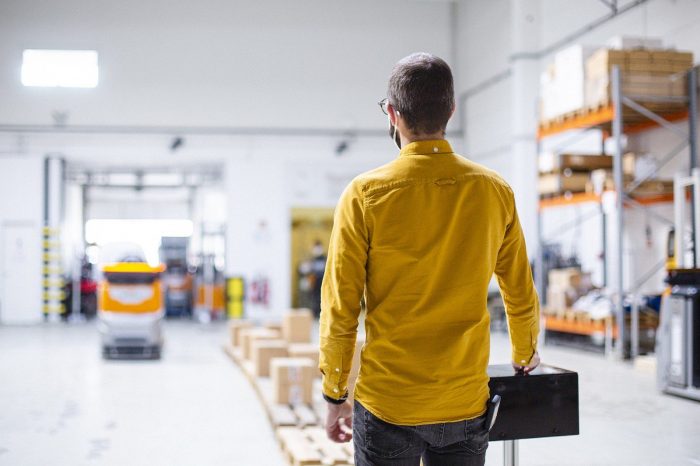Automated vehicles will soon receive “walking maps

Anyone who wants to successfully automate processes in the warehouse needs large amounts of data about the existing infrastructure. How this information can be obtained more easily and possibly even standardized is one of the topics addressed by the research project “Industrial Indoor Localization” (IIL), which ended in February 2021. The Hamburg-based intralogistics supplier STILL not only contributed its wealth of experience in the field of vehicle automation and robotics to this project, but also the ideal vehicle for efficient process automation in the form of its autonomous horizontal order picker OPX iGo neo. This is the next step towards further increasing autonomy and flexibility.
Indoor localization offers intralogistics important tools for forward-looking automation solutions. However, only those who know exactly where a forklift, a robot or a pallet is at any given time can leverage this potential. “For this location determination, we need detailed and preferably standardizable map material,” knows Tino Krüger-Basjmeleh, robotics expert at STILL GmbH. This standardized reference framework was developed between 2018 and 2021 in the research project “Industrial Indoor Localization” funded by the European Regional Development Fund (ERDF) and the Free and Hanseatic City of Hamburg. This resulted in an open-source reference architecture for indoor localization (RAIL), which simplifies the provision of location-based services. STILL was involved in this cooperation between science (Technical University of Hamburg) and industry, as was the sensor manufacturer Pepperl+Fuchs.
Raising the potential of the future market
“Today, numerous automation projects are not realized only because a large initial outlay for map creation and vehicle commissioning is incurred each time they are implemented,” says Tino Krüger-Basjmeleh, describing the current situation and thus the background to the research project. He adds, “At this point at the latest, there is a risk that customers will wave off and discard budding automation plans.” So in fact, great potential is being wasted in an important future market. To change this, maps are needed that enable humans and machines to serve different needs and decouple complex developments. In addition, these maps should also be quickly and easily adaptable to the respective environment by non-technicians. “If these requirements are met, then intelligent localization technologies will reduce costs, increase productivity and improve occupational safety in the near future. With the results of the IIL project that has now been completed, we have come a big step closer to achieving these goals,” the robotics expert is certain.
The OPX iGo neo was ideally suited for the job
An important guarantee for success of the IIL research project was the autonomous horizontal order picker OPX iGo neo contributed by STILL. “With the sensor technology already installed in series in the OPX iGo neo, the integrated vehicle robotics system is already inherently capable of answering all the questions that an automated vehicle has to answer,” describes Tino Krüger-Basjmeleh. The vehicle has profitably contributed these advantages to the research project. But STILL and its customers can also derive important benefits from this circumstance. “During the course of the project, we have developed many new capabilities for the OPX iGo neo and have thus once again significantly increased its autonomy. This has resulted in a new prototype of the vehicle, which we can use in the future to demonstrate numerous automation approaches to our customers very clearly and without much effort,” says Krüger-Basjmeleh.
For example, during the research project the autonomous vehicle demonstrated for the first time that it can switch between manual, fully automatic and autonomous assistance mode very smoothly and almost unnoticed by the user. In practice, these processes work like this: The vehicle reaches the picker in automatic mode with a previously picked pallet and then switches to assistance mode. In this mode, it accompanies the operating personnel in the picking process so that the operators can individually assemble goods and the vehicle continuously orients itself to the operators as an “extended arm”. At the end of the picking process, the vehicle automatically brings the order to the transfer point. “This is indeed a novelty for the entire intralogistics industry. In the course of the research project, we were able to demonstrate for the first time that this process runs so smoothly. The operating personnel are optimally supported by this COBOT (collaborative robot) functionality,” says the robotics expert happily.
For more information, please visit: https://www.still.de/en-DE/company/news-press/news.html
News Categories
- » NEWS HOME
- » Automation & Robotics
- » Industry 4.0
- » Material Handling
- » Sensors
- » Quality & Testing
- » Machine Vision
- » Laser & Optics
- » Metalworking
- » Motion Control & Drives
- » Hydraulics & Pneumatics
- » Process Industry
- » Renewable Energy
- » Agriculture
- » Home & Office Furniture
- » Environmental Tech



